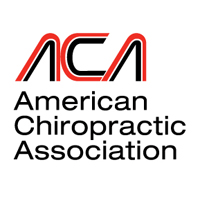TMJ Disorders and Treatment
- By susant3t
- •
- 06 Apr, 2015
- •
What is TMJ? TMJ or Temporomandibular Joint disorder is the diagnosis given to a mechanical dysfunction of one or both of the joints of the jaw. The TMJ is located just in front of the ears. Because of this close proximity to the ears, a patient with a TMJ problem may experience ear symptoms such […]
TMJ or Temporomandibular Joint disorder is the diagnosis given to a mechanical dysfunction of one or both of the joints of the jaw. The TMJ is located just in front of the ears. Because of this close proximity to the ears, a patient with a TMJ problem may experience ear symptoms such as hearing the joint pop, grind. or crack when mouth is opened and closed.
When these joints are healthy, they act as a “shock absorber” for the jaw. When a misalignment or breakdown of cartilage occurs in one or both of these joints, this cushioning effect is reduced.
What Causes TMJ Problems?
Continued stress, especially from chewing, can cause inflammation to the joint and soreness in the surrounding muscles. These disturbances to normal function can result in localized jaw pain, headache, earache, and possibly even dizziness.
TMJ problems can originate from trauma to the jaw, holding the jaw open for extended periods of time, uneven bite, imbalance in the bite from excessive dental restoration or extraction, or from bruxism (grinding the teeth, usually while sleeping.)
Diagnosis and Treatment of TMJ
Your Doctor of Chiropractic can examine your jaw joint and help determine if soreness, popping and clicking noises, or pain near the ear is coming from a TMJ condition. X‑rays, if needed, can help determine if there has been damage or deterioration to the cartilage in the joint. In difficult cases, a MRI may even be ordered to help determine the overall integrity of the TMJ.
Treatment for TMJ dysfunction can be done with chiropractic manipulation to help restore the normal alignment of the jaw. Supportive measures may additionally be needed in some cases and could include applications of ice and moist heat, massage of the jaw muscles to relieve jaw tension, acupressure, stretching, and jaw muscle exercises. Nutritional supplements such as calcium may be needed if a deficiency is suspected.
The diet may also need to be adjusted to decrease the stress to the jaw from chewing. At night, a bite guard may need to be worn if bruxism (involuntary teeth grinding) is present.
Call Grappin Chiropractic Clinic Today for a Free Complimentary Consultation if You Are Experiencing Symptoms of TMJ @ 941-426-9551

There are various types of massage therapies, including sports massage, trigger point massage, deep tissue massage, and Swedish massage. Although these treatments can range in pressure, they all offer invaluable benefits for the body, mind, and spirit. Read on for the top six benefits of massage therapy.

Are you looking for a new, effective way to improve your physical health? Medical massage therapy is here to provide the natural health benefits you need. From optimizing circulation to relieving muscle tension and inflammation, medical massage is a powerful treatment for pain reduction and overall wellness.
























